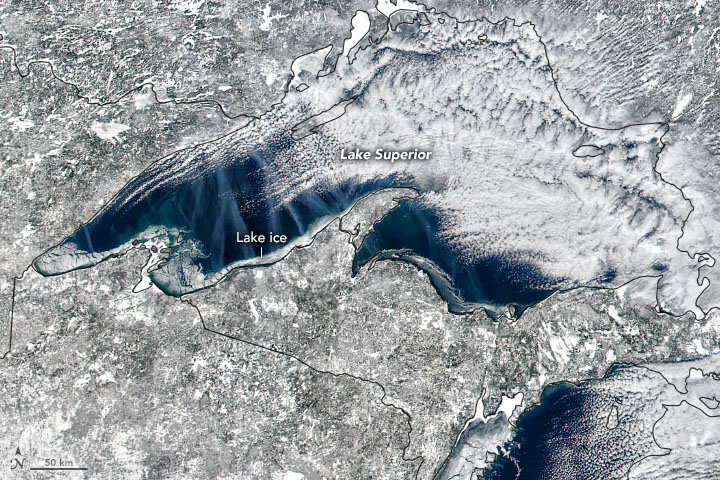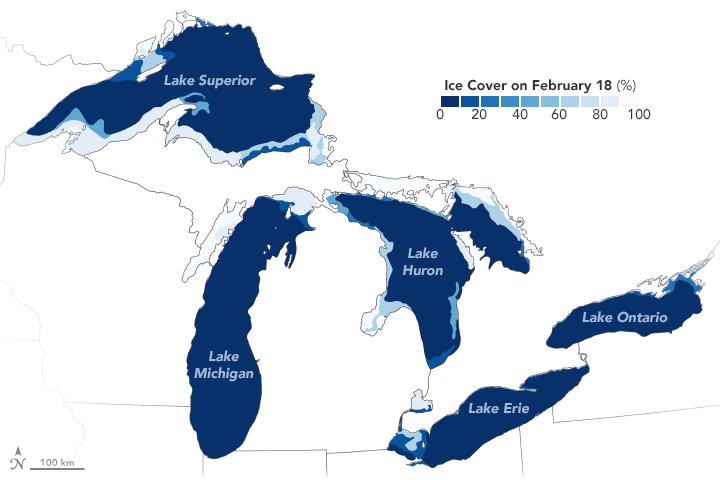


Each winter, at least part of North America’s Great Lakes freeze. But whether the year is a boom or a bust for ice cover comes down to air temperatures. This season, warmth has prevailed.
Blue-green open water was still widely visible on February 14, 2020, when the Visible Infrared Imaging Radiometer Suite (VIIRS) on the NOAA-NASA Suomi NPP satellite acquired the natural-color images above. Most of the white areas are snow and clouds, but a close look along parts of the shorelines—particularly Lake Superior—reveals small patches of ice.
Ice that day spanned just 17 percent of all of the Great Lakes surface area combined. For context, ice usually spans 41 percent of the Great Lakes on an average February 14; it can be much higher or lower depending on the year. For example, early and persistent cold air temperatures during the winter of 2013-2014 brought record-high ice cover to most of the Great Lakes, reaching 88 percent coverage. The opposite scenario has played out in winter 2019-2020.
According to Jia Wang, an ice climatologist at NOAA’s Great Lakes Environmental Research Laboratory, four patterns of climate variability drive the warming or cooling effects on air temperature over the Great Lakes. So far this season, the North Atlantic Oscillation, the Atlantic Multidecadal Oscillation, and the Pacific Decadal Oscillation, have contributed to warm or very warm air over the Great Lakes. The El Niño-Southern Oscillation has been neutral (contributing cool air).
“The year-to-year change in air temperature is the major factor in the winter ice cover,” Wang said. “The contribution from global warming is smaller, but it adds some warming to the larger warming caused by year-to-year change of the four teleconnection patterns.”

In the days after the satellite images were acquired, ice extent climbed slightly and then dipped to 16 percent coverage on February 18, which appears in the ice cover map above. Wang expects that ice levels for the remainder of the 2019-2020 winter should stay relatively low as sunlight increases with the approaching spring. Low winter ice cover can leave a lasting effect on the Great Lakes for the rest of the year, with increased evaporation, higher water temperatures, and stronger stratification of water layers into the fall.
NASA Earth Observatory images by Joshua Stevens, using VIIRS data from NASA EOSDIS/LANCE and GIBS/Worldview and the Suomi National Polar-orbiting Partnership, and ice cover data from NOAA/Great Lakes Environmental Research Laboratory. Story by Kathryn Hansen.
Image of the Day Water Snow and Ice Remote Sensing
Warm air prevailed in the 2019-2020 winter season, preventing much ice from forming on the lakes.
Image of the Day for February 20, 2020